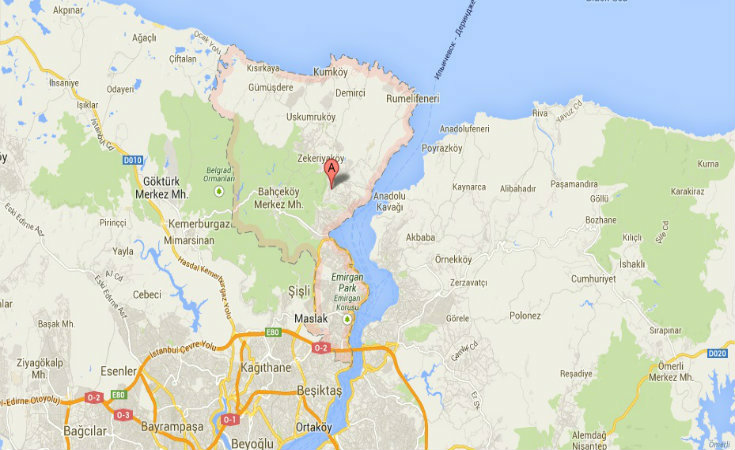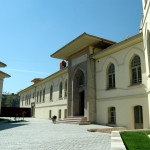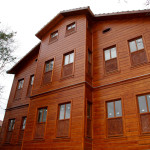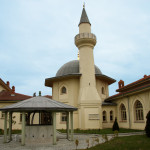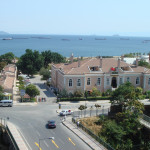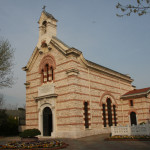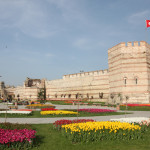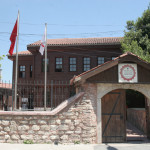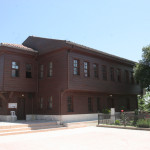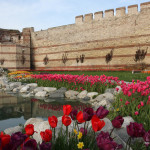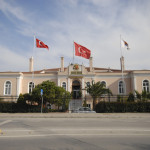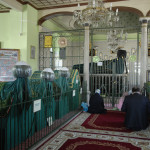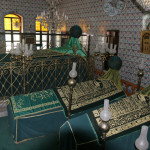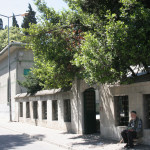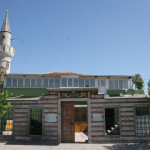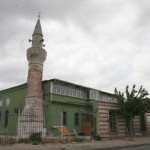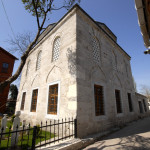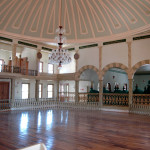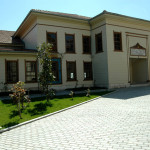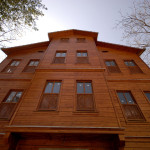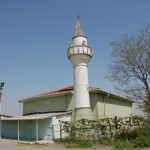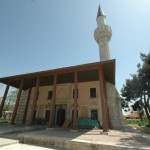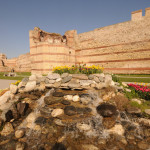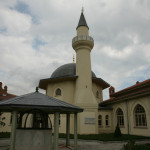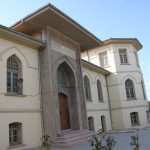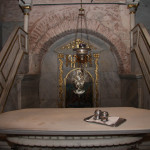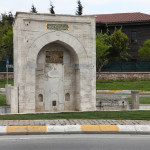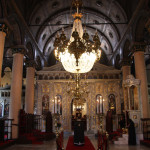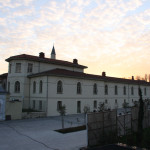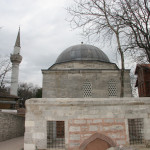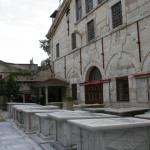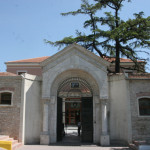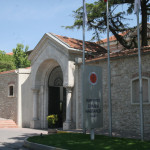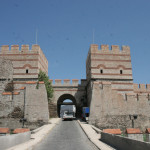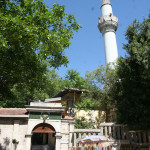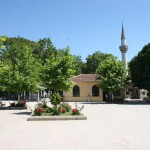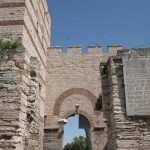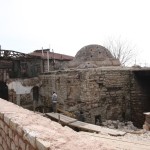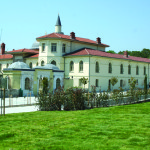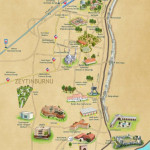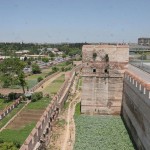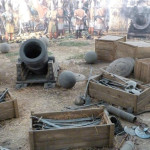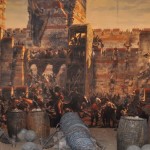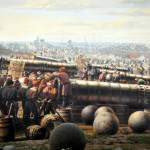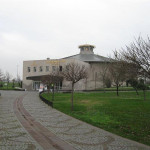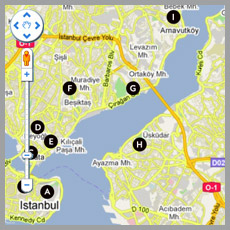History
During Roman period Via Egnetia road connecting Bizantion to Hebdomon (Bakırköy) passed through this area. During Byzantine time, it is assumed that Zeytinburnu area was extending part of Hebdomon. The area which was used rather as a walking promenade and a recreational place, became one of the most popular excursion points of Istanbul from 5th century. The oldest building known in this area was Panayia Church near Balıklı Sacred Fountain.
Furthermore, “Piyi Palace” was built by Byzantine Emperor Basileius I in Balıklı area in 9th century. Again, “Zoohodos Piyi Church” (Balıklı Greek Church) in this area was devoted to the Virgin Mary. This is reconstructed in 19th century after many repairs and destructions.
During the years following the conquest of Istanbul by Turks in 1453, the oldest settlement known in the area was around Kazlıçeşme. Fatih Sultan Mehmed Han who built Yedikule Fortress after onquest, had many tanneries established in Kazlıçeşme and a small settlement was established around the mosque built by him.
Some disputes arouse between the Greeks of the city after conquest of the Istanbul by Turks and the community called as “Kudüslü Papazlar” (Priests from Jerusalem) settled in the point of land today known as Zeytinburnu in Kazlıçeşme. A visible revival was experienced with coming of Priests from Jerusalem, Zeytinburnu became a pleasant neighborhood with agricultural products, olives and various fruits grown by them.
New settlements appeared on the area when small mosques and dervish lodges started to be built outside the city walls at the beginning of 16th century. 16-18th centuries appears as the ages in which historical structure of Zeytinburnu (Turkish-Islam) created. During that ages, these areas were liked by the dervishes in Istanbul since there were far from settlement areas, and Zeytinburnu and its vicinity became field of activity of Yenikapı Dervish Lodge and Mevlevi’s. in 19th century.
Territories of the district were inside the borders of district of Bakırköy in the beginning of 20th century, when the Republic was proclaimed. Places except for Kazlıçeşme, Maltepe and Merkez Efendi were so scarcely populated. Again in these years, Çarpıcı Pasturage still kept its old vivacity as a popular recreational area.
Decision of Istanbul Municipality to include Zeytinburnu among the areas allocated for industrial areas changed the fate of the district. Industrial facilities were rapidly built in the area. The area lost its feature of being a recreational area with irregular settlement after arrival of Balkan immigrants, migration to Istanbul in 1950’s and settlement of people whose houses were destroyed in and around Aksaray due to expropriations of Menderes.
Zeytinburnu was administrated as a region surrounded in the east by Fatih, west by Bakırköy until 1950’s, however it was attached to Fatih as eastern region Zeytinburnu sub-district on 30 July 1953 as a result of increase in its population, and its west region remained to be attached to Bakırköy.
Population of the district increased as time went on and reached 88.341 in 1960 and this caused some inadequacies in its sub-district administration and Zeytinburnu became 14th district of Istanbul with the law enacted on 1 September 1957.
Having no villages and sub-districts, Zeytinburnu is only divided into quarter in terms of administration. Population of Zeytinburnu is 284.814 according to last census (Year 2000 census). The district currently has 13 quarters, 58 avenues and 970 streets.
Industrialization Process (LEATHER)
Beginning of the industrialization, on of the most distinctive features of Zeytinburnu, dates back to Fatih era. Establishment of tanneries in Kazlıçeşme after conquest of Istanbul made the area as the center of leather business. Beginning of the industrialization, on of the most distinctive features of Zeytinburnu, dates back to Fatih era. Establishment of tanneries in Kazlıçeşme after conquest of Istanbul made the area as the center of leather business.
The district has very advantageous conditions in terms of shopping. District which is considered as the leather center of Turkey, is the place where you can buy the leather in cheapest way which played important role in its development. Furthermore, Zeytinburnu is a shopping heaven with many textile manufacturer from which you can buy at the first hand and Olivium which hosts factory shops of many big brands.
If you’re interested in buying leather products, please read our related article.
Historical structures, buildings, religious sites
Takkeci İbrahim Ağa Mosque
According to its epigraph, the construction date of the mosque is Hegira 1000 / 1591 A.D. The mosque has three doors that open up to a spacious yard. A lead-covered roof rather than a dome decorates the mosque, which has a single, stubby minaret. It has a total of eight windows located on the right and left side of its main gate. Between the two lower windows reside two ornamented mihrab (altar) niches. Enameled tiles from the 16th century stand out as other decorative elements. This mosque is also the first mosque built for the residents of the Topkapı area.
Panorama 1453 Museum of History
This museum is one of 30 panoramic museums in the world. A total of eight local and foreign artists along with the originator Haşim Vatandaş the painter, contributed to the museum’s panoramic artwork that was initiated in 2005 and completed in 2008. Among the paintings that stand out is the one that depicts the events of the conquest of Istanbul, particularly on the morning of May 29, 1453. The painting shows around 10 thousand figures among which are also carefully detailed Ottoman and Byzantine soldiers. The depiction of a tree located right across the castle walls claims to be the largest and most detailed painting of a tree.
The Merkez Efendi Hamam
The hamam, which contains a water pool with chambers in it, a rather rare element of construction found in hamams in Istanbul, was built as an annex to the Merkezefendi Kulliyat by Mimar Sinan. The hamam remained intact, except for the men’s changing room, until it underwent restoration in the 1960s. The men’s changing room, designed with a wooden frame system, is known to have been renovated previously in the 19th century. The hamam, which is covered with small domes, has a warm room with two private chambers, a hot room with four, and a shaving area to the right of the entrance.
Yenikapı Mevlevi Dervish Lodge
The Yenikapı Mevlevi Dervish Lodge is considered the second most famous dervish lodge after the Galata Mevlevi Dervish Lodge. Immediately upon its foundation, it became a popular site frequently visited by Mevlevi dervishes living in Istanbul and in the neighbouring areas. Entering from the Sultan’s Gate, the first structure one observes is the Nazif Pasha Library. The library is rectangular and was commissioned by Abdurrahman Nafiz Pasha. On the ground floor, there are service sections, a water tank connecting to a hamam, a bakery, a kitchen and a basement. The hamam is exceptional, as it is adjacent to the bakery. Many important figures and artists of the Ottoman era paid visits to the dervish lodge.
The Balıklı Hagiasma
The Hagiasma (Sacred spring) was built on green pastures outside of the city, near the Panagia Church during the reign of Emperor Leon the First in the mid-5th century. The Hagiasma was damaged many times by waves of sieges and underwent manifold renovations. When Murad the Second’s army besieged the city on June 8, 1422, this area was used as the sultan’s headquarters. From the beginning of the 18th century, the locals called the Hagiasma the “Balıklı Hagiasma” (Hagiasma with Fish) due to the fish that lived in the pool and that name has stuck until today.
The Balıklı Orthodox Church
The Zoodohos Piyi Church, otherwise known as the Church of the Virgin Mary, actually carries the official name of Panagia Pege. It is located in the Seyitnizam neighbourhood, next to the Orthodox Cemetery. Twenty of the 268 patriarchs of the Orthodox church who served in Istanbul after its conquest by the Ottomans are buried here. There is a long-held belief that the name of the church is somehow connected to an even older story that it was built over a “spring of life”.
The City Walls
The ramparts that fall within the borders of Zeytinburnu are called “Land Walls.” There are 123 bastions on the land walls starting from the Marble Tower on the coast of the Marmara Sea and stretching towards Edirnekapı and the Golden Horn. The walls are actually a double wall with a trench in between and have a total length of 5420 meters. Istanbul’s most magnificent gate can be found about a kilometer inland from the Marble Tower. Now referred to as the “Golden Gate”, it was called the “Porto Aurera” at the time of its construction and it has witnessed the triumphs of the Roman, Byzantine and Ottoman Empires empires.
The Yedikule Fortress
The four cornered northern tower next to the Golden Gate is known as the Pastorama Tower and it dates from the Byzantine era. During the years 1724-1725 it was rebuilt with eight facades. It is built on a flat surface. The fortress was commissioned by Sultan Mehmet the Conqueror. As the walls suffered much damage during the conquest, the Sultan demanded that they be restored. Moreover, he commissioned the construction of a pentagonal fortress with seven bastions by adding another rampart with three towers to the two parallel Byzantine towers and four bastions.













